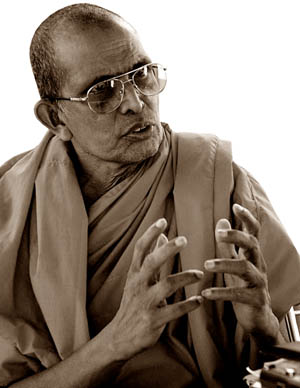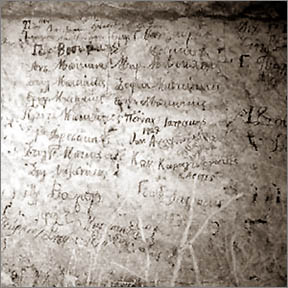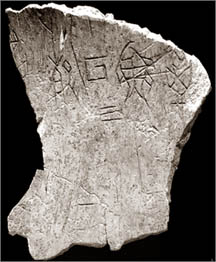|
observer |
|
|
|
|
|
OTHER LINKS |

|

|

|
Historical links between the South and the North-EastThe research by Ven. Ellawala Medhananda Thero :
At the very outset, without dwelling on the subject of the lecturer, Ven. Ellawala Medhananda thero described the hardships that he experienced in various expeditions often braving forests, and hostile weather to reach the rock-inscriptions and cave-inscriptions over four decades of his scholarly life. He, particularly, mentioned that he had travelled a great deal and literally walked from the banks of Kumbukkan Oya (a river whose banks were supposed to be the first inhabited areas of the island) and along the coast to Jaffna and Mannar islands. The entire lecture was based on the finding of rock-inscription by the thero, amounting to 260. Some of these rock-inscriptions (160) with their interpretations have been published by the Department of Archaeology, titled "Aprakata Brahmiya Sellippi" (Unknown Brahamin rock-inscriptions). On his recent travel to the remote village of Diyatitta Wewa, a mountainous area bordering the Eastern province, Ellawala Medhananda thero stumbled upon a rock-inscription at the cave of the Buddhist monk of the village temple, leading to the finding of a series of rock-inscriptions that linked this mountainous and rather scarcely inhabited area to the ancient kingdom of the Sinhalese.
The mountain range is situated in a strip of landmass stretching from Horopathana to Aluth Oya and linking itself to the border of the North and East. The range consists of three loosely-nestled mountains of Diyatitta Wewa, Madaya Kanda and Berawaya Kanda. Since the rock-inscriptions had been, deciphered for the first time, and interpreted in 1875 by scholars such as Gold Smith, Edward Muller, Wickremesinghe and Dr. Senarath Paranavithana, principally two methods have been employed to decipher the meanings of the rock-inscriptions; copying the rock-inscription by hand and embossing the inscription onto a paper with a special ink. Both techniques are prone to error, sometimes, missing out important parts of the inscriptions. For instance, the rock-inscription at Pottaya Kallu (near Omari in the liberated parts of Kanchi kudichchiaru) which establishes important historical links to the Kingdom in the South or Ruhunu had been interpreted by Dr.Senarath Paranavithana. In the interpretation, Dr. Parana has interpreted the ward 'Javacanaya', with little doubt over it, as Javaca leader. However, the thero found out that the word should have been interpreted as 'Navicanaya' suggesting that King Mahanaga of Ruhuna, had been also served as naval leader. Subsequent inscriptions proved that Mahanaga had served in the Puttalam District as a naval leader prior to his exit to Ruhuna. The rock-inscriptions revealed that Nandi Mitra, one of the twelve commanders of king Dutugamunu's army, had been a descendent from the lineage of commanders. According to Medhananda thera, the title 'Devanam Piyatissa 'had been used by more than 18 Sinhalese kings. Particularly, symbols at the end of each inscription are considered as some form of signature which is present in most of the inscriptions describing the lineage of Nandi Mitra, the commander. Accordingly, the genesis of Nandi Mitra can now be traced, to a greater extent, with the aid of rock-inscriptions; Nadica's father, Senapati, was a commander and his wife was Sunama. Their son was Pramuca Nadica, Nadica's son Mitta and his daughter Sunama (same as mother's name). Nandi Mitra's wife was Kusha (daughter of Sata Natata as mentioned in three rock-inscriptions; Diyatitta Wewa, Berawaya Kanda and Maha Cachakodiya. According to 30 rock-inscriptions interpretted by Ven. Ellawala Medananda thera, the genealogy can be traced further. Nandi Mitra's son was Duta Sumana, an ambassador. His son was Padumaca Abaya as mentioned in Piyangala and Tonigala rock-inscriptions. Nandi Mitra's daughter Upassica Gutta, was married to a prince Tilakana Aya. According to these rock-inscriptions, Nandi Mitra can be considered as member of royal dynasty. These inscriptions also revealed about a nobleman known as Vyagga. Vyagga's son offered rock caves to the Maha Sanga of the world (to all members of the Buddhist Order). Similarly, two inscriptions were discovered in Erupatana Mahacachcha kodiya and Kirimakulugolla in Ratnapura. Apart from that landmass being discovered as the place of the birth of Nandi Mitra, Ellawala thera has also discovered the Dipa Raja and the Prachina Raja, provincial rulers under the Anuradhapura kingdom. Madana Hela, Mollikulam Male inscriptions suggest that at Mollikulam Male, Viharamahadevi had lived in a rock-cave as a nun. These 86 inscriptions and other inscriptions evidently disproved the concept of the traditional homeland advocated by the LTTE as a myth. The Sanga Nayaka of the Amerapura Dharmarashita Nikaya most Ven. Weligama Gnanaratna thera presided over the meeting. The lecture was organized by the Ministry of Religious Affairs and the Department of Public Trustees. |

 The lecture titled "Jathika Urumaya Matukarana Gaveshana" which can
be loosely translated into English as researches that re-establish
national heritage, was a thought-provoking lecture delivered by
Puravidya Chakravarthi Ven. Ellawala Medhananda Thero.
The lecture titled "Jathika Urumaya Matukarana Gaveshana" which can
be loosely translated into English as researches that re-establish
national heritage, was a thought-provoking lecture delivered by
Puravidya Chakravarthi Ven. Ellawala Medhananda Thero.  Though the purpose of the visit was to encourage villages to remain
in the threatened village, Medhananda thero explored the mountain and
discovered 30 rock-inscriptions.
Though the purpose of the visit was to encourage villages to remain
in the threatened village, Medhananda thero explored the mountain and
discovered 30 rock-inscriptions. 






